Monitoring Desk
Perseverance is NASA’s fifth Mars rover and its biggest and heaviest to date. Its mission at the Red Planet starts in February 2021.
A new rover for the red planet
NASA’s Mars 2020 Perseverance rover (shown in artist’s illustration) is the most sophisticated rover NASA has ever sent to Mars. Ingenuity, a technology experiment, will be the first aircraft to attempt controlled flight on another planet. Perseverance will arrive at Mars’ Jezero Crater with Ingenuity attached to its belly.
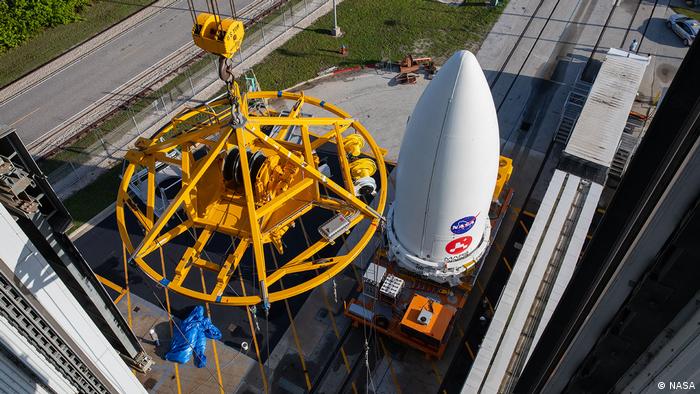
Everything prepared
NASA engineers loaded the Mars rover Perseverance onto an Atlas V rocket at the start of July 2020. The rocket took off on July 30 from Cape Canaveral, Florida. The rover should arrive on Mars by February 2021.

Presentation in a clean room
This is how Perseverance looked when it was presented to the public in 2019. The rover will support NASA’s Curiosity rover, the most modern rover until Perseverance came along. The new rover weighs a little over a ton — 100 kg (220 pounds) more than its predecessor. And at 3 meters (10 ft) long, it’s also 10 centimeters longer as well.
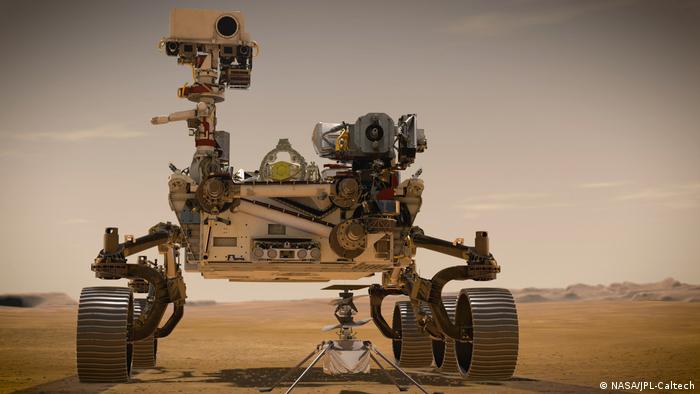
More performance
Perseverance can be loaded with more research instruments and sensors than its predecessor. And its gripper arm, with its cameras and tools, is stronger, too. The rover can collect samples from Mars. It’s got 23 cameras and many other instruments. One mission is to test whether it’s possible to extract oxygen from Martian rock. But, hey, what’s that standing next to the rover on the ground?
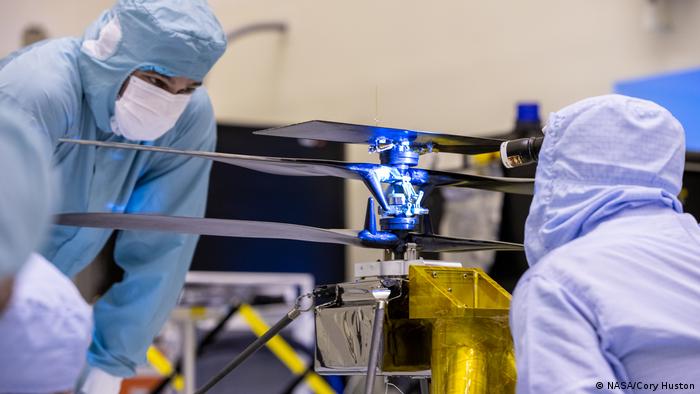
A small drone
That’s right! Perseverance has a helicopter onboard. That’s never happened on a planetary mission before. The helicopter is completely new territory for its developers. It will be the first time they experience and collect data from flight in atmospheric conditions that are different from those on Earth, and in a gravity that is about a third of our own.
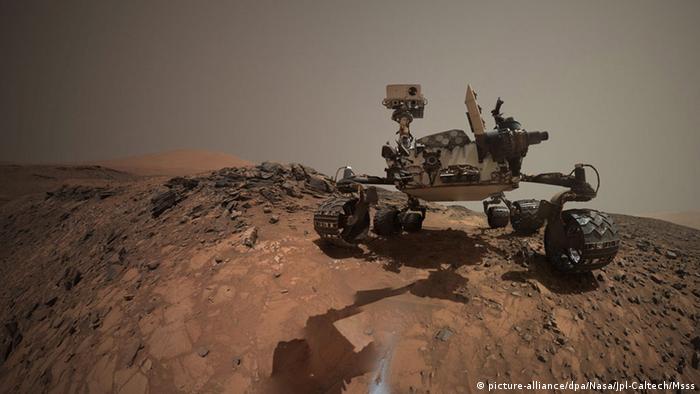
The robotic giant
Curiosity is the largest and most modern of all Mars rovers currently deployed. It landed on August 6, 2012, and has since traveled more than 21 kilometers. It is much more than just a rover. Its official name is “Mars Science Laboratory,” and it really is a complete lab on wheels.
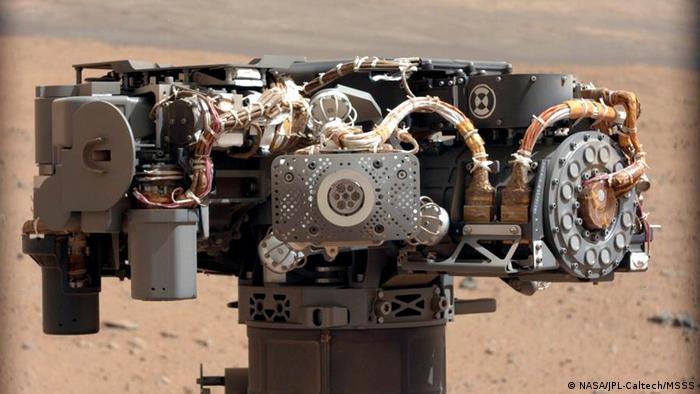
What’s in it?
For example, it contains special spectrometer, which can analyze chemical compounds from a distance with the help of a laser; a complete meteorological station that can measure temperature, atmospheric pressure, radiation, humidity and wind speed; and most importantly, a chemistry lab that can run detailed analyses of organic compounds and is always on the hunt for traces of alien life.
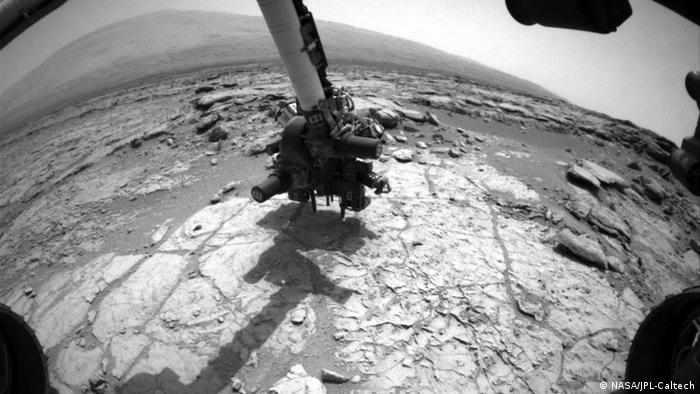
Not just scratching the surface
Curiosity has shown that life would theoretically be possible on Mars. But it hasn’t discovered any life, yet. The robot’s arm is equipped with a full power drill. Here, it’s taking a sample in “Yellowknife Bay” inside the Gale Crater.
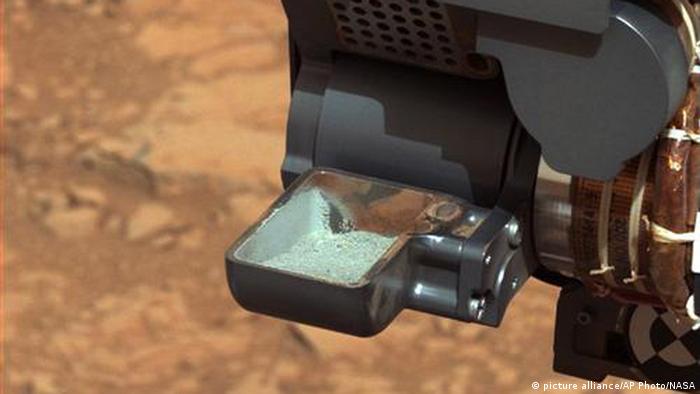
Off to the lab!
The Mars dust is processed by a large number of instruments. First, it’s filtered and separated into different-sized particles. Then, those get sorted and sent off to different analytical laboratory machines.
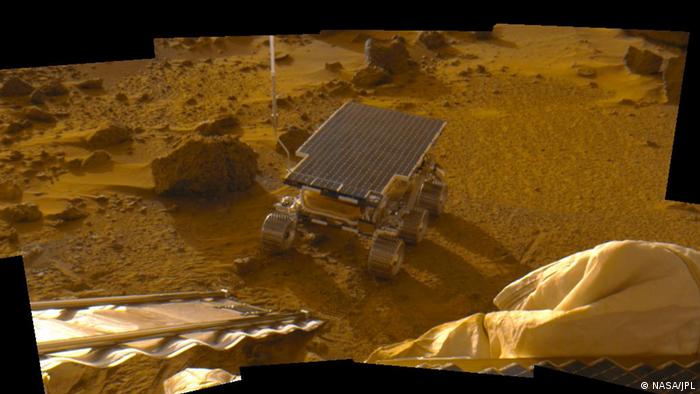
A tiny predecessor
Curiosity’s predecessors were much smaller. On July 4, 1997, the small Mars rover Sojourner left its first tire tracks behind in the dust of the red planet. It was the first time a mobile robot had been left to its own devices there, equipped with an X-ray spectrometer to conduct chemical analyses and with optical cameras.
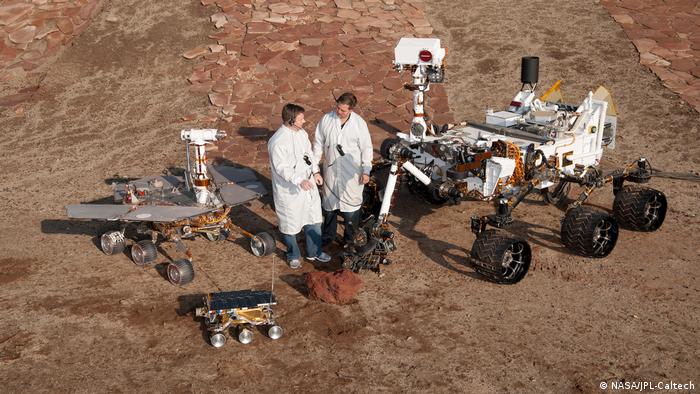
Size comparison
Three rover generations. (The tiny one up front is Sojourner.) At 10.6 kilograms (23 pounds), it’s not much bigger than a toy car. Its top speed: 1 centimeter per second. Opportunity weighs 185 kilograms — roughly the equivalent of an electric wheelchair. Curiosity is as big as a small car, at 900 kilograms. The big ones travel up to 4 or 5 centimeters per second.
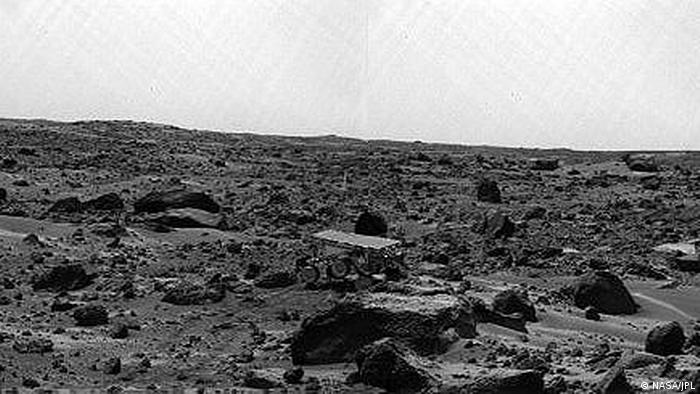
Almost four months of duty
Sojourner travelled about 100 meters during its lifetime and delivered data and pictures until September 27, 1997. This is one of the last pictures of it, taken nine days before the radio connection broke down. Sojourner probably died because the battery did not survive the cold nights.
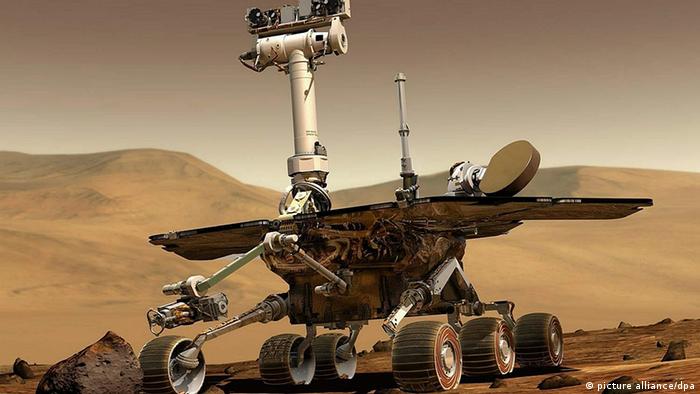
Paving the way for tomorrow’s technology
Without the experience of Sojourner, newer rovers could have hardly been envisaged. In 2004, NASA landed two robots of the same model on Mars: Spirit and Opportunity. Spirit survived for six years, travelling a distance of 7.7 kilometers. The robot climbed mountains, took soil samples and withstood winter and sandstorms. Its sibling, Opportunity, lost contact on February 13, 2019.
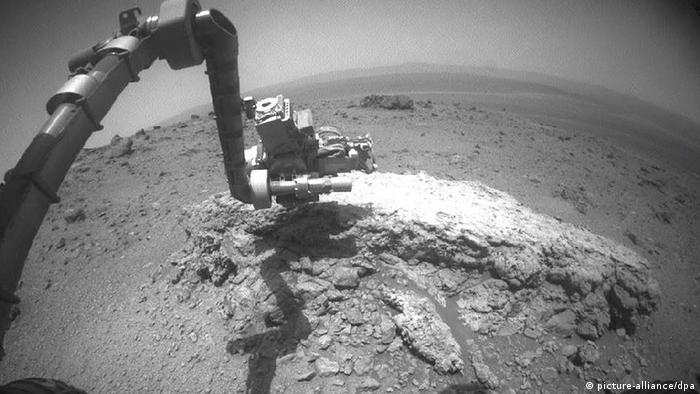
Lots of gadgets
Opportunity passed the marathon distance of 42 kilometers back in 2015, and to this day, it has covered much more ground than Curiosity. It can take ground probes with its arm. It has three different spectrometers and even a 3D camera. It was last operating in “Perseverance Valley,” an appropriate workplace for the sturdy robot, before being incapacitated by a sandstorm.
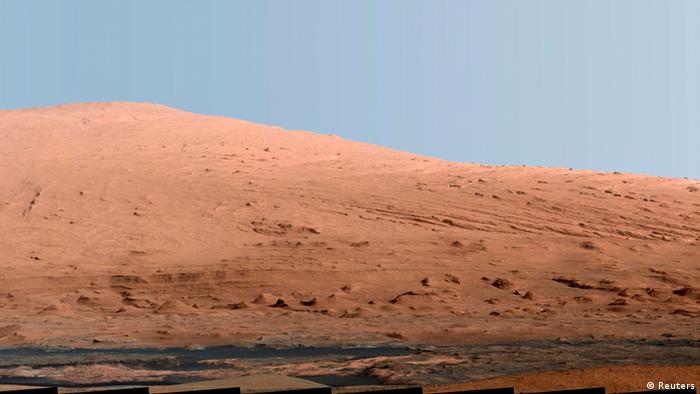
The red planet’s landscapes
This panorama was taken by Curiosity’s mast camera. The most modern of the rovers will stay in service as long as possible — hopefully at least another five years and much longer. The Martian landscape looks familiar somehow, not unlike some deserts here on Earth. Should we give in to our wanderlust, then — or would it be better leave Mars to the robots?
Courtesy: DW






